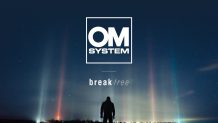NASA says the photos were crucial to analyzing what happened. In some cases NASA even bought the photographer’s camera so researchers could measure and correct any image distortion.
When the team of expert image analysts had assembled all the images, the result was a nearly continuous record of the shuttle’s re-entry path over the U.S. The pieced-together video shows various flashes and bright dots near the shuttle, giving important information about the many “debris events” that occurred during the descent and suggesting to NASA where to find debris on the ground. Probably the most widely seen photos taken by an amateur were made by cardiologist Dr. Scott Lieberman from his back yard in Tyler, Texas, about
100 miles/160 km east of Dallas-Fort Worth using a
6.5 megapixel Canon EOS D60 with a 75–300 mm image-stabilizing telephoto lens (effectively 120–480 mm on the D60) and a polarizing filter. Jerry O’Neill





